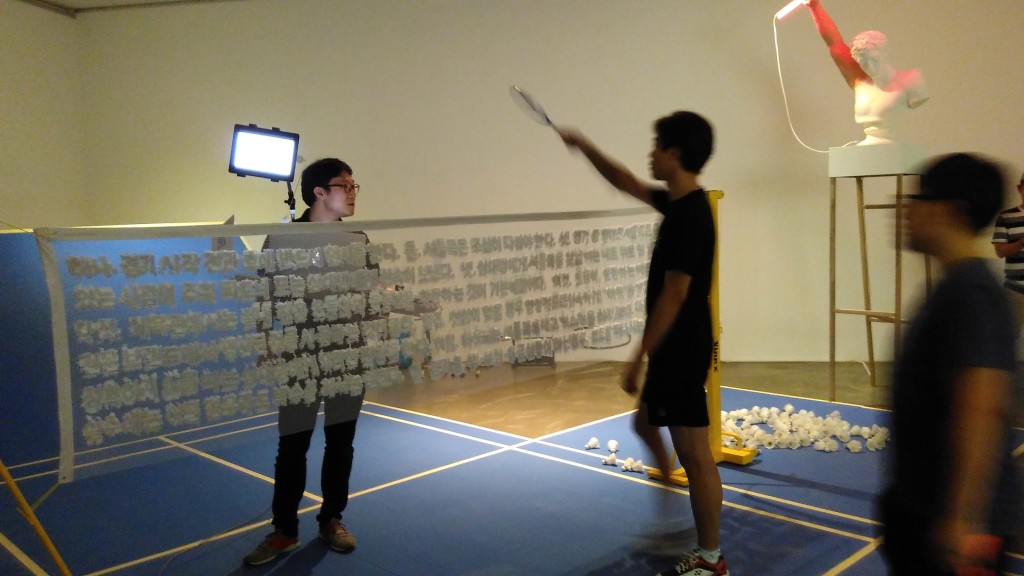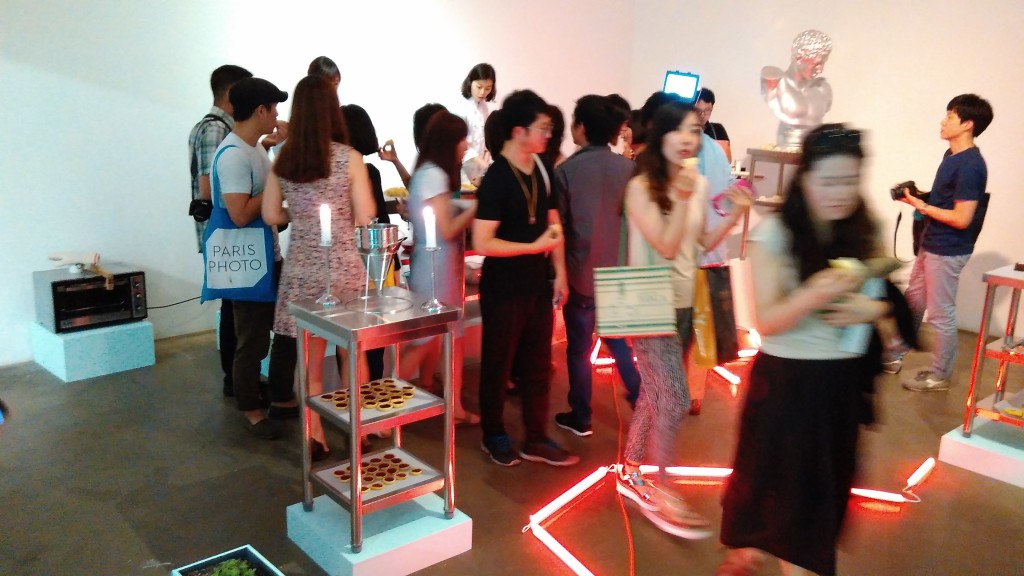July 2 – July 17, 2015, Facebook
So I just happened to arrive in Seoul for the opening of this show. A group of artists called MOUNT decided to use the project money they got to pay for enhancing their skills and then “exhibit” the skills they went through: They joined academies and clubs for improving their coding skills, Japanese skills, baking skills, hip-hop dance skills and badminton skills. 
In the show then they exhibited the newly acquired skills: A badminton court has been installed, as well as a kitchen – these were the two most prominent objects of the show. Coding has been represented by a strange strap-on skeleton equipped with tablet screens which one of the artists carried during the opening and which now lies in a corner of the exhibition space playing back a documentation of the performance. The “Japanese” artist used a Wacom tablet to copy Japanese porn pictures onto a projection screen together with some Japanese characters. Hip-hop dance was shown on a recorded video and projection in the space.
Some of the ‘exhibits’ worked better than others, but that can also partially be a result of the cultural gap between me and the show – the ‘coder’ has for example been typing in and displaying some Korean characters on his iPad screens, so I did not understand what he was doing. Similarly there may be some explanation I didn’t get why the ‘Japanese’ was using Japanese porn magazines to trace figure outlines on the screen. Was Japanese porn the only source used by the artist to study “Japanese”? In the case of the ‘hip-hop dancer’ I thought it was a pity she did not do a performance on site… or maybe I missed it in the opening hubbub?
People coming in after the opening day will have a less strong experience than when the works were activated by the artists themselves. But still, the exhibit is clean and nicely done, and once one reads the accompanying text, one gets the point.
I find the underlying idea of self-development using functional definitions of what is ‘useful’ in contrast the perceived ‘uselessness’ of art as very much to the point. Artists apply for grants to produce ‘culture’ which is however rarely appreciated or even cared about by the grant giver as long as the reporting numbers match.
For the grant giver, once the specially convened jury selects artists and the money distributed, the process is kind of finished. In the case of project grants, maybe there is still a follow up and the results are measured using the quantitative logic by checking if an event took place, the number of visitors, news reviews, budget balance etc. As the jury who selected the projects is long gone, it is the institution’s administrators who remind artists to provide documentary and quantified proofs of a successful project conclusion.
In this case the artists ‘invested’ the project grant money not only into themselves, but also into a provable and quantifiable skill which is probably documented by a completion or participation certificate and could be possibly tested by industry or competition standards. It is a tongue-in-cheek comment not only on the grant distribution practice but also on the way human resources departments evaluate applicants by applying standardized templates to individual CVs making decisions according to years of ‘experience’, university degrees, hard skills or soft-skill relevant extracurricular activities. 